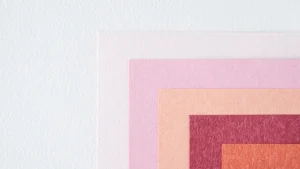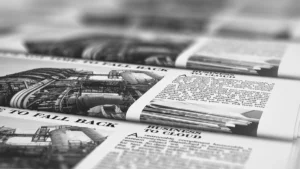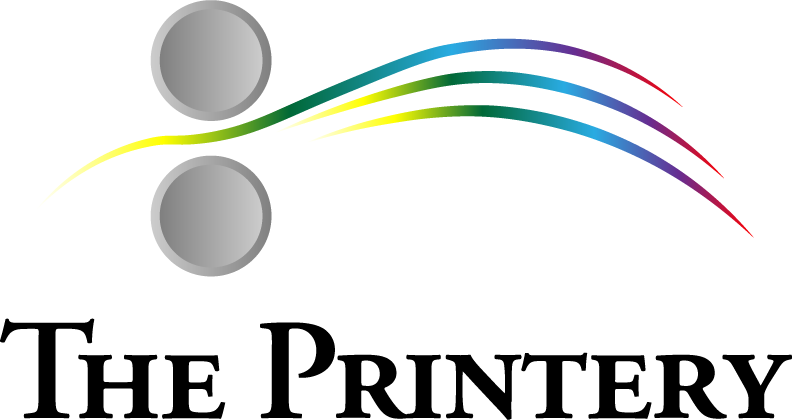Brochures remain one of the most versatile and effective tools in a marketer’s toolkit. When designed thoughtfully and printed with care, they can communicate key messages, showcase products or services, and strengthen brand identity. For organizations with multiple locations or large-scale campaigns, understanding brochure printing ensures brand consistency and impact across every touchpoint.
In this guide, you’ll learn about the different types of brochures, how to design them effectively, and best practices for producing high-quality print materials.

What Is a Brochure?
A brochure is a printed marketing piece, often folded into sections, that provides detailed information about a brand, service, or campaign. Unlike a simple flyer, brochures allow space for storytelling, visuals, and structured messaging. Learn more about brochures here.
Because brochures can serve as handouts at trade shows, leave-behinds for sales teams, or direct mail inserts, their versatility makes them essential for marketing leaders managing multi-location campaigns.
Types of Brochures
Choosing the right brochure style depends on the content you need to share and how you plan to distribute it. Common options include:
1. Bi-Fold Brochures
The bi-fold brochure is one of the most common formats. It folds in half, creating four panels (front cover, two inside pages, and back cover). Its clean layout makes it ideal for showcasing a few core services or products.
2. Tri-Fold Brochures
A tri-fold brochure folds into three equal sections, creating six panels. This design allows more space for structured storytelling, making it popular for product features, event promotions, and service menus.
3. Gate-Fold Brochures
With gate-fold brochures, the panels open like doors to reveal a dramatic center spread. This format works well when you want a strong visual impact, such as unveiling a new product or campaign theme.
4. Z-Fold Brochures
A z-fold brochure unfolds like an accordion, making it easy to guide readers through sequential information. Businesses often use it for step-by-step instructions, timelines, or maps.
5. Custom Brochures
For large-scale campaigns, custom folds or die-cut brochures can elevate your brand presence. While more costly, they create a memorable experience for the reader.
Design Tips for Effective Brochures
Designing a brochure involves more than choosing images and fonts. The goal is to balance creativity with clarity, ensuring your audience connects with the content.
- Prioritize Branding: Use consistent colors, fonts, and logos across brochures to align with your brand standards. If your organization already uses PMS colors, ensure they are included in the design to guarantee accurate reproduction.
- Keep Messaging Clear: Use concise headlines and supporting text. Break up large paragraphs with bullet points for easy reading.
- Leverage Visual Hierarchy: Place the most important information—like value propositions or calls to action—where the eye naturally goes first.
- Use Quality Images: High-resolution photography and graphics prevent pixelation and reinforce professionalism.
- Include a Call to Action: Always direct your audience to the next step, whether visiting a website, scanning a QR code, or contacting a representative.
Best Practices for High-Quality Brochure Printing
Once the design is ready, the printing process determines the final look and feel. Paying attention to the details ensures your brochures stand out.
Paper Selection
Choose a stock that aligns with your brand’s image. Glossy paper enhances photos and colors, while matte finishes provide a subtle, elegant look. For durability, consider heavier stock.
Finishing Options
Lamination, UV coating, or embossing can add an extra layer of polish. While these options may increase cost, they also extend the lifespan of brochures and leave a stronger impression.
Print Consistency
For multi-location organizations, consistency is non-negotiable. Centralizing brochure printing through a reliable partner, such as The Printery, ensures every brochure matches in color, quality, and layout—no matter where it’s distributed.
Print Runs and Efficiency
Think strategically about print quantities. Large runs may lower the per-piece cost, but small runs allow flexibility if messaging changes frequently. Work with your printing partner to balance cost and efficiency.
Why Brochures Still Matter
In a digital-first world, printed materials like brochures may seem old-fashioned. Yet, they continue to deliver impact where screens can’t—face-to-face interactions, direct mail campaigns, and tactile brand experiences. For directors of marketing overseeing universities, franchises, or government agencies, brochures provide a reliable and professional way to maintain brand consistency across wide audiences.
Final Thoughts
Brochure printing combines creativity, strategy, and execution. By choosing the right format, designing with purpose, and following best practices for production, marketing leaders can ensure brochures make a strong impression every time. Partnering with trusted print providers like The Printery helps maintain consistency and quality across all campaigns, no matter the scale.




